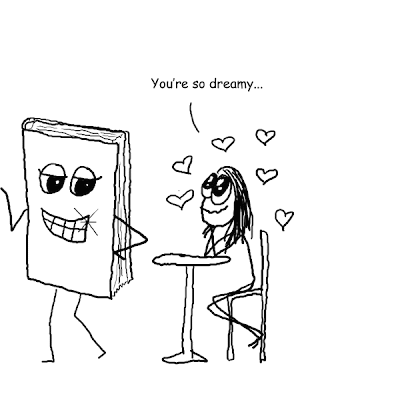I’ve been writing books for pretty much my entire life. Before I could actually write words, I’d make picture books and staple them together. But I didn’t really start revising books until I was, oh, in my twenties.
The main reason for this was that until then, I wrote them all out with an actual pen on paper. This is because I’m old.
Actually, that’s not entirely true. I also typed stories on our electric typewriter, which made me feel about as grownup as is humanly possible. The chemical smell of the ribbon was so professional, and the big ka-CHUNK... zzzzzing! when you hit a carriage return gave you a sense of accomplishment that is entirely missing from this era of text wrap.
I started writing novels on the computer when I was around 10-ish (hilariously terrible novels, naturally), but the thing that really screwed me was my love of blank books. I would (at the time) way rather write something out longhand in a bunch of blank books than type it on a computer. Because blank books were clearly made of magic.
Even that’s not entirely it, though, because in high school I wrote a (godawful) novel just on random lined pads, and put it in a binder. I guess there was something satisfying in the physicality of having an ever-increasing stack of written pages that is missing from having an ever-increasing... number of bytes?
Yeah... that’s not quite doing it for me on a visceral level.
Suffice to say that my practice up until college was to start to write a novel, either make it partway through or finish it, read it to myself in happy accomplishment, and then move on to the next one. Because by that point, I had some other idea trying to burn its way out of my skull.
Then, at some point, it became clear to me that I needed to actually revise things and make them better. This was scary.
After all, the book was there, complete: a single, seamless thing. How could I break it down into pieces? How could I figure out where to add stuff, remove stuff, change stuff? If I changed one thing, then WHAT WOULD HAPPEN TO ALL THE OTHER THINGS?!?!?
I hated revision. I just wanted to be done with it.
But that changed. First, I learned the joys of deleting. There is something really satisfying in cutting an entire scene that isn’t doing anything for the story — it’s easy, it gets your word count down (which is the direction I usually need to go), and it often makes things magically tighter and snappier. Now I’ve gotten to the point where sometimes I’ll write a scene, look at it, and that very same night realize that it isn’t advancing the story and cut the whole thing.
Then I learned to rewrite scenes, which was tougher for me: taking the same basic scene, but starting it over again, approaching it a different way. This was (and still can be) hard, because I had to be willing to let go of what I’d already written as the Way It Happened, and consider my story to be something much more fluid, that could go down all sorts of different ways.
I still have a long way to go before I feel like I’m really good at this. But I’ve recently hit another milestone... To my surprise, on my latest major revision project, I found that I was actually enjoying revising. I always hated it, but this time it was... kind of fun. It was a Green Eggs and Ham moment.
Of course, that may have just been because even revising a novel is still way more fun than my day job (technical writing), which was the other thing I could have been doing. But I’ll take what I can get.
And what have we learned today?
Everything is more epic with dragons.

































